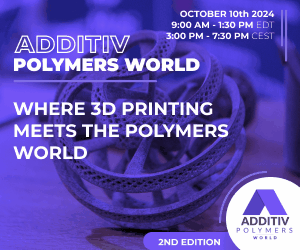 Jack Davies is a product design student at Nottingham Trent University, but he recently moved to Amsterdam to begin an internship at 3D Hubs. Not having a car, Davies was looking for a way to get to work that didn’t involve public transportation and was faster than a bike. An electric skateboard seemed like a good option, but electric skateboards are definitely on the expensive side, so he built his own instead.
Jack Davies is a product design student at Nottingham Trent University, but he recently moved to Amsterdam to begin an internship at 3D Hubs. Not having a car, Davies was looking for a way to get to work that didn’t involve public transportation and was faster than a bike. An electric skateboard seemed like a good option, but electric skateboards are definitely on the expensive side, so he built his own instead.
Using a combination of 3D printing and off-the-shelf parts, Davies built what he calls the Fusion E-Board in less than a week for just under €600, compared to the €1500 or more that commercial electric skateboards cost.
He started with the main components, which were off-the-shelf parts: the trucks, deck, and wheels. He then used Autodesk Fusion 360 to model components inside the main assembly and simulate them to make sure they would be strong enough, particularly the motor mounts that would hold the motor in place. Then he designed the drivetrain, which included the motor mounts, gearing setup and some truck modifications.
“I calculated the desired top speed and torque requirements which then enabled me to select the motors and battery for the board,” said Davies. “The gearing ratio was also calculated and the pulley sizes were selected, along with the drive belt length. This enabled me to work out the correct size of the motor mounts which ensured a well-tensioned belt. The next stage was to design the battery and speed controller (ESC) enclosures.”
The board itself is made of bamboo and bends in the middle, which is a good thing as it absorbs any bumps in the road rather than transferring them to the rider. This presented a bit of an additional challenge, though – a full-length enclosure for the battery and electronics wouldn’t flex with the board and would touch the ground when the board bent, so Davies needed to design a split enclosure.
Luckily, Davies’ place of employment allowed him access to the best 3D printing technology, including HP’s Multi Jet Fusion, which he used for the custom enclosure parts.
“Ensuring that the more expensive printed parts would be compatible and function correctly on the first try was the most critical part of the project,” Davies said. “I had tight budget constraints which meant it wasn’t possible to reorder any parts if there were any mechanical conflicts with the design. A big part of getting it right the first time on the industrial machine was to prototype with low-cost FDM parts first, for fit testing.”
 To protect the internal components and battery casing, Davies added a series of ribs along the bottom of the board, serving the same purpose as human ribs, which also protect delicate internal components. They were 3D printed using MJF technology in nylon, which possesses both strength and flexibility. Nylon was also used for the drivetrain and motor mounts, replacing aluminum components that would have been more expensive and difficult to create.
To protect the internal components and battery casing, Davies added a series of ribs along the bottom of the board, serving the same purpose as human ribs, which also protect delicate internal components. They were 3D printed using MJF technology in nylon, which possesses both strength and flexibility. Nylon was also used for the drivetrain and motor mounts, replacing aluminum components that would have been more expensive and difficult to create.
To keep costs low, FDM 3D printing was used for the larger parts of the assembly, including the battery cover and pulley system, which was 3D printed in ABS.
The final board weighs 15 pounds and has a top speed of 35 mph. It has a range of 10 miles and a charge time of four hours. Davies now has a speedy and stylish way to get to work, and he has made the files for the board public so that others can build their own. Download the files by clicking here.
Discuss this and other 3D printing topics at 3DPrintBoard.com or share your thoughts below.
[Source/Images: 3D Hubs]
Subscribe to Our Email Newsletter
Stay up-to-date on all the latest news from the 3D printing industry and receive information and offers from third party vendors.
You May Also Like
3D Printing Market Reaches $3.45B in Q2 2024, Marking 8.4% Year-Over-Year Growth
The global 3D printing market continued its upward trajectory in the second quarter of 2024, totaling $3.45 billion—a year-over-year increase of 8.4%. Despite a slight sequential decline from $3.47 billion...
New ABB Cobots Are 10 Times More Accurate for 3D Printing and More
ABB has introduced Ultra Accuracy GoFa cobots, which are ten times more accurate than the company’s previous cobots. While older industrial robots have driven innovation in concrete 3D printing, wire...
AM Expands Beyond 3D Printing at IMTS 2024
As discussed in our previous article on the Western hemisphere’s largest manufacturing trade show, the International Manufacturing Technology Show (IMTS), the industrialization of 3D printing was on display. This was...
Ursa Major & US Navy Make $25M Joint Investment in New 3D Printed Rocket Motor Prototype
Ursa Major, the Colorado-based company dedicated to building a North American rocket propulsion supply chain with advanced manufacturing, has become one of the first recipients of funding from the DoD’s...





































